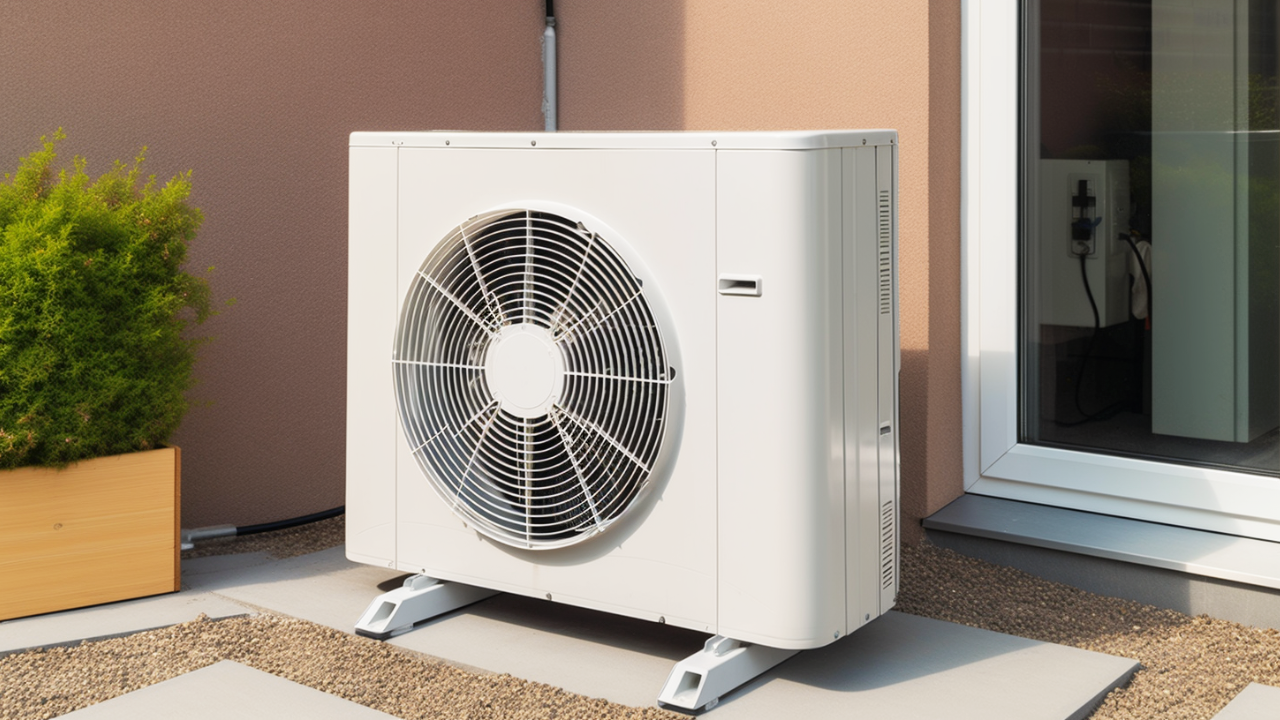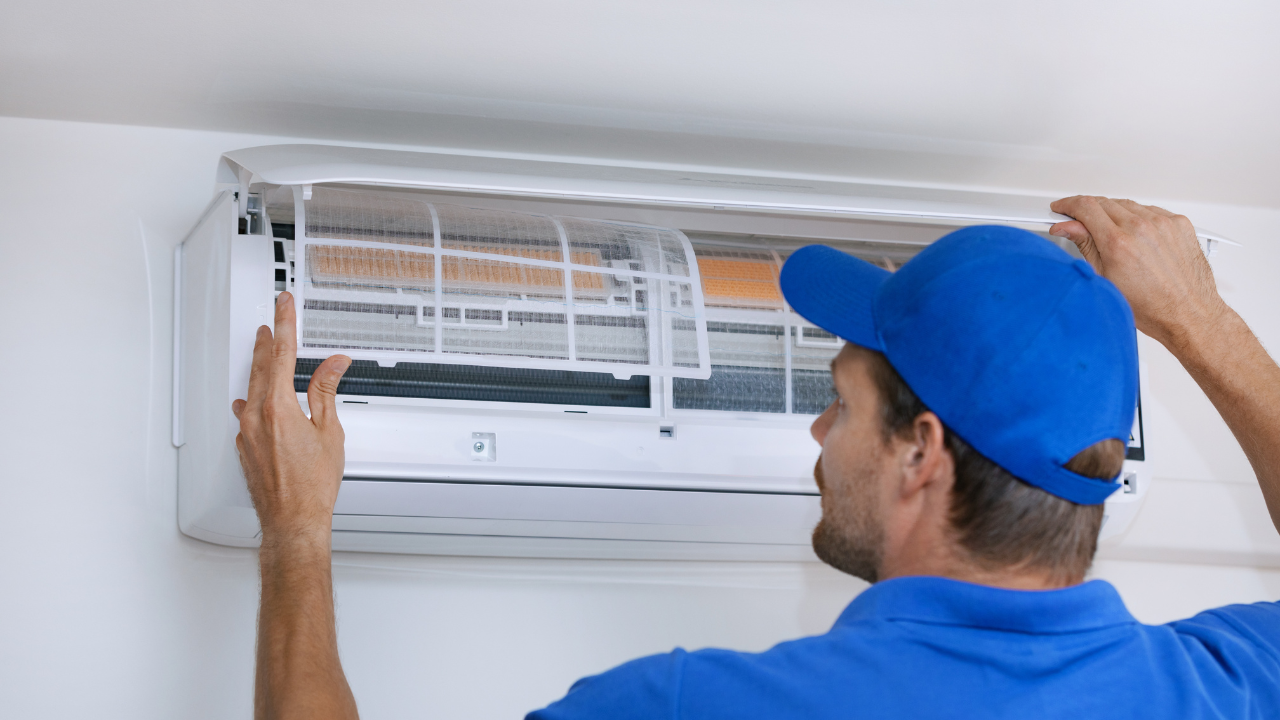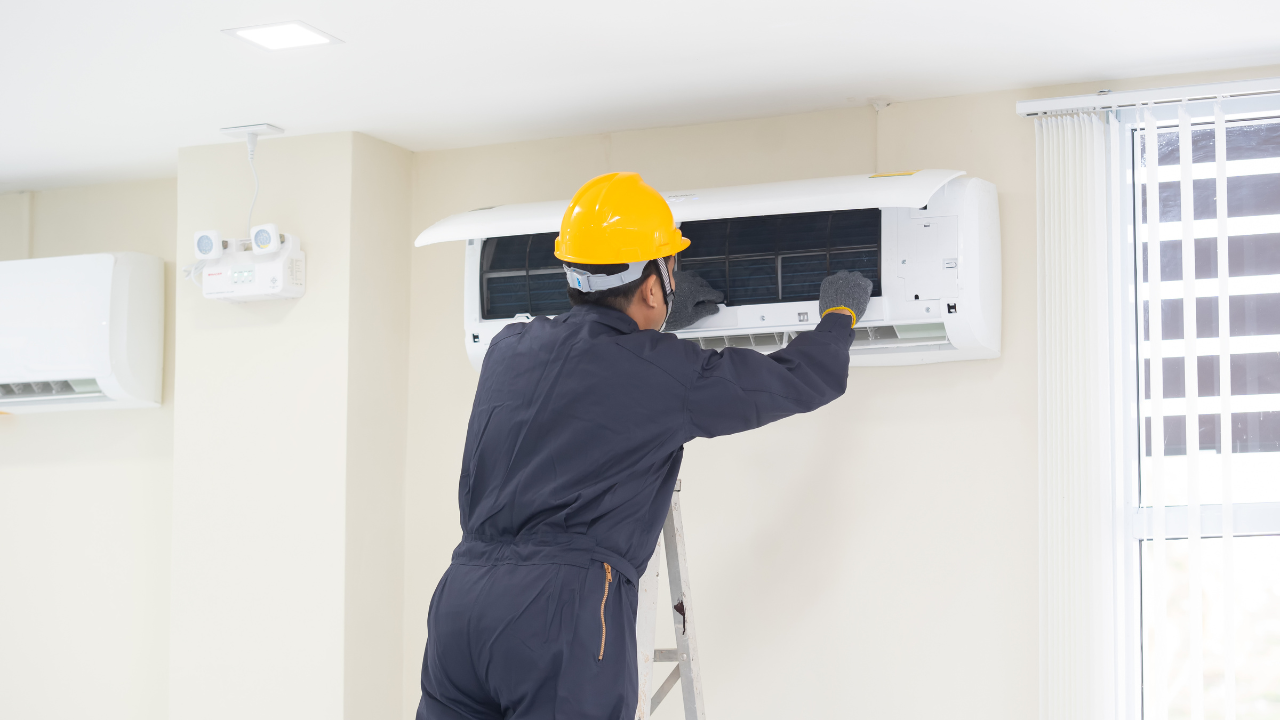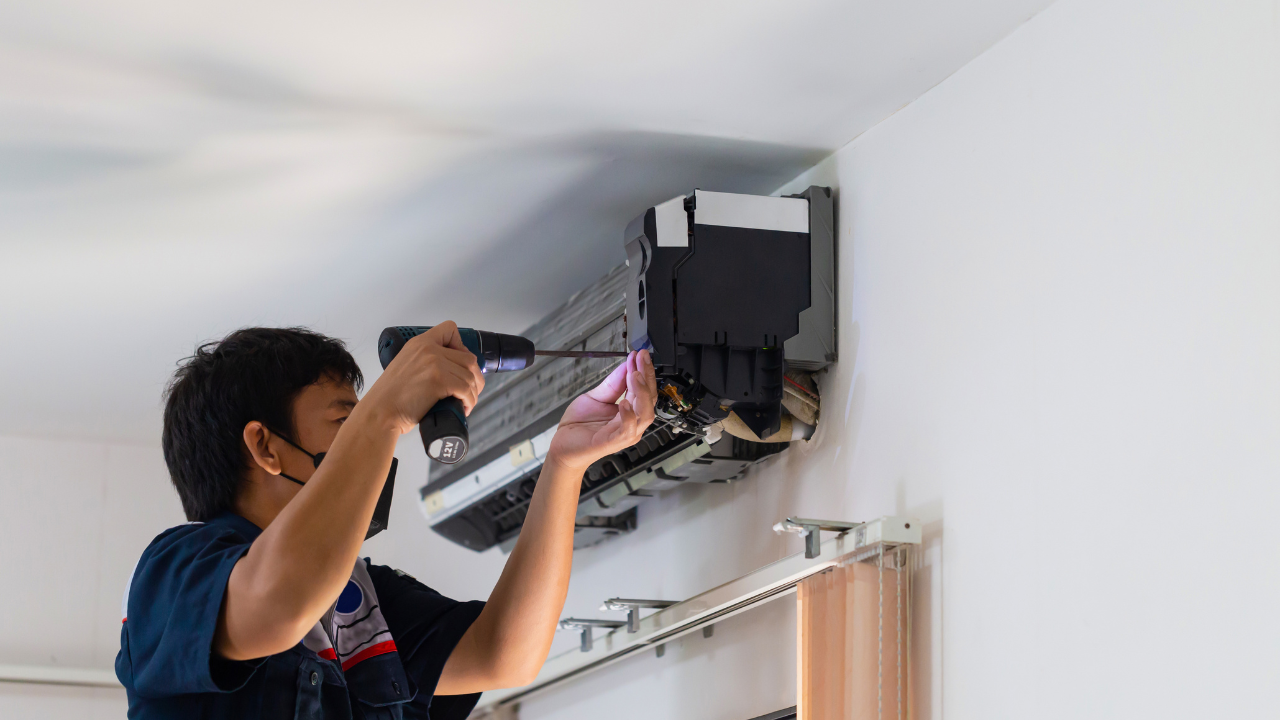Last Updated on September 3, 2023 by Pro Handyman Australia – Editorial Team
Understanding the Importance of Regular Maintenance
During the summer months, high temperatures become an everyday reality, leading many of us to seek relief indoors. Your air conditioner serves as your faithful ally against the sweltering heat, often running continuously to maintain a comfortable indoor environment. Therefore, it’s crucial to ensure your air conditioner operates efficiently by keeping it clean. Not only will this extend the life of your unit, but it will also improve its performance, saving you money on energy bills.
Practical Steps for Ensuring Your Air Conditioner Stays Clean
The process of cleaning an air conditioner can seem daunting, but it’s essential for maintaining the appliance’s longevity and efficiency. Performing regular maintenance is especially important if you rely heavily on your portable air conditioner to stay cool during the hotter months. Routine maintenance is extremely important if you want your air conditioner to last a long time without developing any issues.
Frequency of Cleaning Different Types of Air Conditioners

Window Air Conditioner Units
For window air conditioning units, it is generally advisable to conduct a thorough cleaning every two weeks. Regular maintenance is key to ensuring the unit’s efficiency and longevity, as well as for maintaining optimal indoor air quality.
Central Air Conditioning Units
In contrast, central air conditioning units are best inspected and cleaned by professionals on an annual basis. These annual check-ups allow experts to verify coolant levels, identify and fix leaks, and clean the coils to maintain the system’s overall health.
Key Areas to Focus On for Window Air Conditioners
Filters and Coils
Two major components that require attention in a window AC unit are the filters and coils. Filters are essential for purifying the incoming air, and when they become clogged, your air conditioner needs to expend more energy to cool your home. This leads to higher electricity bills without providing the desired level of comfort.
Coils play a critical role in the circulation of hot and cold air. Keeping them free of dirt and dust build-up is essential for the unit’s effective operation.
Professional Inspection for Central Air Systems
Central air conditioning units are more complex, often requiring specialized knowledge for thorough maintenance. A qualified HVAC contractor should ideally conduct a comprehensive inspection, including a review of the ductwork and an efficiency assessment.
DIY Air Conditioner Maintenance Tips

For Window Units
For a typical window air conditioner, you will need:
- A screwdriver
- A cloth
- A soft brush
- A spray bottle
- Mild dish soap or detergent
- For Central Units
For central air conditioning maintenance, your toolkit should include:
- A screwdriver
- A cloth
- A vacuum
- A hose
While it’s crucial to have your central air system periodically inspected and maintained by professionals, that doesn’t mean you’re off the hook in between those visits. Think of it like a car; your mechanic provides the major tune-ups, but regular maintenance, like checking oil levels and tire pressure, is up to you. Similarly, there are various air conditioner maintenance tips you can follow to ensure your system runs smoothly in between professional inspections.
Safety First: Powering Down the Air Conditioner
Before embarking on any maintenance task involving electrical equipment, it’s imperative to prioritize safety. Always begin by turning off the air conditioning unit and unplugging it from the power source. This step eliminates the risks associated with working on an electrical unit that is still drawing power.
Consult the Manual and Dismantle the Front Cover
The design of the front cover of your window air conditioning unit may differ based on the model. Typically, this cover is held in place by tabs, screws, or knobs. To dismantle it effectively without causing any damage, consult the owner’s manual that came with your unit for specific instructions on how to remove the front cover.
Detailed Cleaning of the Filter
The filter is usually positioned at the front of the unit. If you have difficulty locating it, your manual will be a reliable resource for information. Once you’ve located the filter, proceed with the following:
- Dust off any loose debris using a soft cloth.
- Rinse the filter gently using lukewarm water mixed with a mild soap solution.
- Allow the filter to air-dry completely before reinstalling it into the unit.
Paying Attention to Coils: The Evaporator and Condenser
In a window air conditioner, you’ll typically find two sets of coils: the evaporator coils, which are situated towards the interior side of the window, and the condenser coils, which face the exterior. Here’s how to clean them:
- Start by brushing off dirt and debris from both sets of coils using a soft brush or cloth.
- For persistent grime, employ a spray bottle filled with water and some mild dishwashing liquid soap. Avoid adding too much soap, as an overly sudsy solution can create other issues.
- Wipe down the coils with a clean, dry cloth.
Final Steps: Drying and Reassembly

Once all the components are clean, it’s important to ensure they are thoroughly dry before reassembling the unit. Replace the front cover, taking care to fasten it securely according to the guidelines in your unit’s manual. Once the assembly is complete, you can safely turn the power back on and enjoy the enhanced efficiency of your freshly cleaned air conditioner.
Cleaning the Air Conditioner With Hose and Water
Starting Off Safely: Powering Down the Central AC Unit
When dealing with electrical equipment, safety should always be your top priority. Begin by turning off the central air conditioner unit. The vent for your central AC system can vary in location depending on your home’s design; it might be situated on the walls, under windows, in the ceiling, or on the floor.
Vent Cover Removal: Setting the Stage for Cleaning
Your vent cover may be secured in different ways depending on its design. It may require a screwdriver for unscrewing or could have push tabs for easier removal. Consult your unit’s manual if you’re uncertain about how to proceed.
Addressing the Filter: Clean or Replace
Once you’ve removed the vent cover, you should find the filter situated just behind it. A washable filter can be cleaned the same way as window AC units, which include using a soft cloth, mild soap, and lukewarm water, followed by air-drying. If your unit utilizes disposable filters, simply replace the old one with a new filter, ensuring that any arrows indicating air flow direction are properly aligned.
Outdoor Unit: Switching Off and Prep Work
To access the outdoor unit for cleaning, locate the breaker switch, which is often housed under a flip-up lid near the condenser unit. Shut off the breaker for your safety while you work on the unit.
Clearing Debris: Vacuum the Condenser Unit
After turning off the outdoor unit, remove its top to expose the inside. Use a vacuum cleaner to remove any accumulated leaves, grass, dirt, or other debris from around and inside the unit.
Washing the Unit: Gentle Hose-Down
Using a standard garden hose, carefully spray down the unit to remove dirt and grime. Make sure to avoid spraying water near the electrical box, as moisture could cause electrical issues. It’s crucial to use a garden hose for this task, rather than a power washer, which can damage the delicate fins of the condenser unit.
Drying Time: Allow the Unit to Air Dry
After the wash, let the unit air-dry for about 30 to 60 minutes to ensure that all components are completely dry. Once drying is complete, you can safely turn the unit back on and enjoy a cleaner, more efficient central air conditioning system.
Filter Management: A Key to Efficiency and Air Quality

The service interval for your air conditioning unit’s filter depends on your lifestyle. For example, households with children or pets may need to replace the filter every month, while others without these factors might only need a filter change every two to three months. Surprisingly, only 36% of homeowners regularly change their air filters, which is quite alarming. A straightforward preventative measure like a filter change can ensure your system runs efficiently and can save you money in the long run.
Condenser Unit Care: The External Necessity
The condenser unit, typically situated outside your home, is an integral part of your central air conditioning system that requires occasional cleaning. Generally, cleaning once a year suffices, but the frequency may vary depending on your unit’s location and its susceptibility to debris. Maintaining a clean surrounding area for your condenser unit is equally essential. As a general guideline, keep any plants or wildlife at least two feet away from your air conditioner to ensure optimal performance.
Clear the Way: Optimal Airflow for Maximum Efficiency
Airflow is crucial to your air conditioner’s performance. Make sure that no furniture, clothes, books, or other items obstruct the unit’s vents. For outdoor central AC units, a minimum of 12-inch clearance all around the unit is recommended to maintain unhindered airflow and optimal functioning.
Proactive Measures: Regularly Check for Common Issues
Keep an eye out for common problems such as weak airflow, ice formation on coils, or leaks. These issues often signal a blockage in the air conditioning system or a dirty, clogged filter that needs immediate attention.
Professional Consultation: Know When to Seek Expert Help
If your central air conditioner is unable to maintain consistent temperatures or if there’s a sudden spike in your utility bills without an increase in usage, it may be time to consult a technician. Listen carefully for any abnormal sounds when your system starts up; if you detect something unusual, a professional inspection is strongly advised.
Recognizing the Signs: When Does Your AC System Need a Cleaning?

Ensuring your air conditioning system is clean not only enhances its efficiency but also extends its lifespan, particularly during the hottest times of the year. To keep your AC unit running optimally, be vigilant for the following indicators that suggest your system may require a thorough cleaning.
Reduced or Absent Airflow
If you find it difficult to feel air emanating from your vents, this is an immediate cause for concern. Several factors could contribute to poor airflow, with the most likely culprit being a clogged air filter. Other possibilities include accumulation of debris on essential components like the heat exchanger, evaporator coil, or circulating fan. Begin by checking the air filters and replacing them when needed. If this doesn’t improve the situation, it’s time to consider a full system cleaning.
Accumulation of Dust Around Registers
Frequent dust buildup around the edges of your air registers is another sign pointing to the need for cleaning. This usually warrants an inspection of your air ducts. When your system’s air filter becomes saturated, airborne contaminants may settle at the edges of your registers or even within other parts of your system, such as the circulating fan or the ducts themselves.
Unpleasant Odors: Mold and Mildew
The dank, dark conditions within your AC system create an environment conducive to the growth of mold and mildew, particularly when indoor humidity exceeds 50%. If you notice a musty smell when your system is operating, it’s crucial to inspect both your internal components and ductwork. Neglecting this can result in the circulation of spores that may exacerbate allergies and other health issues.
Unusually Long and Frequent Operating Cycles
Your AC system is engineered to operate within certain cycle lengths. When its components are obstructed, the system has to exert more effort than usual to maintain a specific temperature. While this might not be immediately obvious, you’ll likely notice a spike in your utility bills. If your system appears to be running more frequently than usual, this is a strong indication that a cleaning is overdue.
Decreased Cooling Capability
A common complaint is that the air circulating through the system isn’t as cool as expected. This could be attributed to multiple factors, but restricted airflow is often a key contributor. One frequent source of obstruction is vegetation encroaching on the external condenser unit. Overgrown plants can hamper the refrigerant’s ability to transfer heat effectively, affecting the coolness of the air emitted by your AC system.
Diagnosing Persisting Issues: Why Your Air Conditioner Might Still Be Ineffective After Servicing
The Role of Refrigerant Gas and its Leakage
One primary reason your air conditioner may fail to cool adequately even after servicing is an issue with key components, such as a refrigerant gas leak. It’s a common misconception that the refrigerant gas gets used up over time; in reality, it circulates in a closed-loop system. The metal pipes housing this gas can develop corrosion over time due to the formation of specific acids. Lack of regular maintenance can exacerbate this corrosion.
If a leak occurs, the refrigerant gas will gradually escape until insufficient levels remain to cool your home effectively. In such cases, a certified technician will need to evacuate all the existing refrigerant gas, locate and repair the leaks, and then recharge the system with fresh refrigerant. Attempting to fix this on your own is strongly discouraged, as specialized tools are necessary for both leak detection and repair.
Failure of Compressor or Other Major Components
Another potential issue affecting your air conditioner’s performance could be a malfunctioning compressor. When the compressor fails to operate correctly, it can’t compress the refrigerant gas adequately, leading to inefficient heat exchange and ineffective cooling. Professional intervention is advised to diagnose and correct such issues involving key components.
The Perils of Neglecting Minor Issues
While refrigerant leaks and compressor failures are significant problems, numerous other issues could hamper your air conditioning system’s efficiency. A common mistake is to ignore small problems when the unit doesn’t perform up to expectations. Such neglect can be costly in the long run, possibly even necessitating the complete replacement of your unit. Therefore, taking prompt action by consulting a qualified technician is crucial for maintaining your system’s longevity and efficacy.
Evaluating Credentials: A Fundamental Step in Hiring an AC Technician
One of the first aspects to consider when looking for an AC technician is their level of training, experience, and credentials. Ensure that the specific brand of your air conditioner is among those they service, which is usually listed on their website. Having a technician familiar with your particular brand can significantly improve the service quality for your air conditioning unit.
The Importance of Community Reputation
It’s equally crucial to gauge the reputation of the technician within the local community. You might want to conduct an online search of the technician or their company name. This should yield a range of customer reviews that offer valuable insights into their proficiency, customer service quality, and overall experience.
Customer Reviews: A Window into Technician Competency
Online reviews can be a treasure trove of information, revealing not just the technical competence of your potential technician but also the quality of customer service you can expect. They often contain details that can help you make an informed decision, such as how the technician handles complications or whether they tend to stick to their initial quotes and timelines.
In summary, when searching for an AC technician to address your cooling system’s problems, it’s wise to look beyond the initial service quote. A comprehensive evaluation that includes checking credentials, local reputation, and customer reviews will provide you with a well-rounded view, helping ensure that you make an informed choice.
